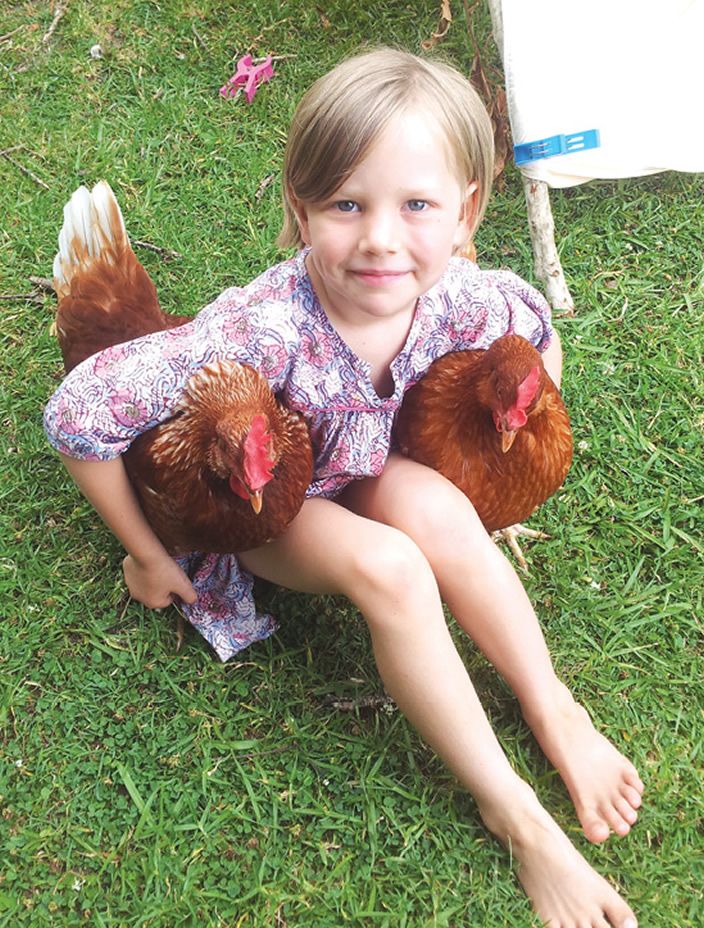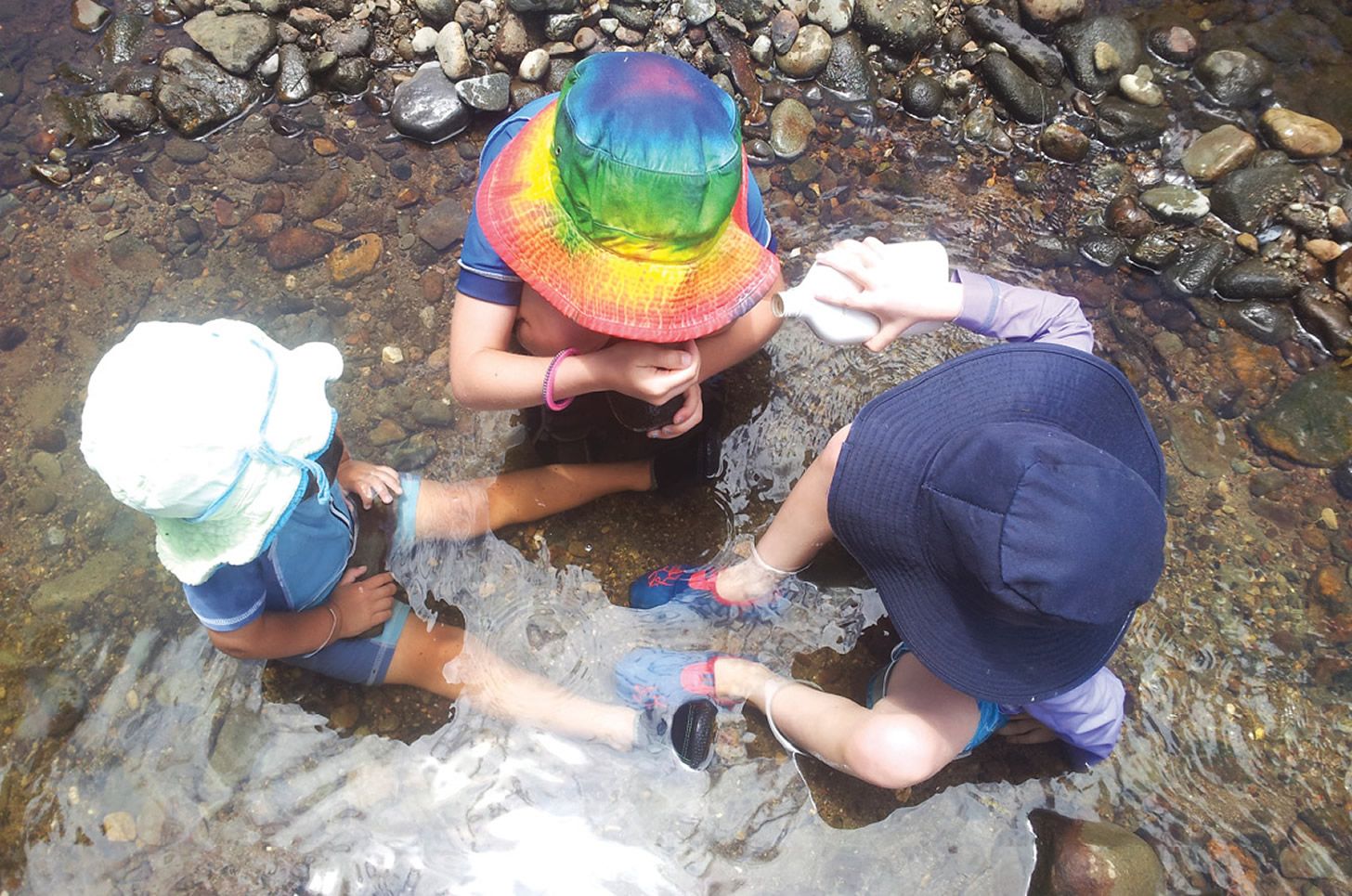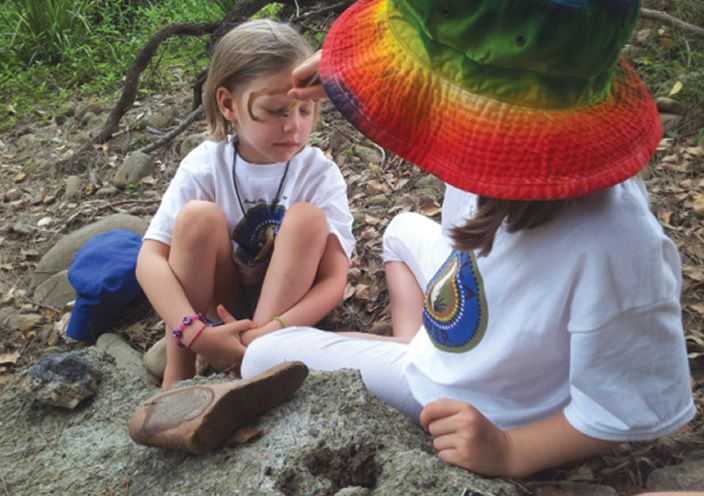Learning by imitation
“We often discuss personal and ecological care, reflecting on how we do things. When we play in nature, these skills are developed through daily interaction with habitats.
“Caring for our environment is the same thing as caring for ourselves and others. The connections children make through these interactions in the natural environment are further explored through story, song and journaling.
“We also practice ‘ecological storytelling’ – telling stories which connect us to our local space, plants and animals. This draws together children’s own emotional and social experiences and places it in context to their local environment.”
Jennifer said her biggest goal is for children to feel a sense of belonging.
“Through learning these valuable experiences from an early age, children develop into environmentally responsible adults, with an understanding of the critical role everyone plays in sustainable living and ultimately how their actions impact the world we live in.”
Revitalisation in Leeton
Leeton Preschool in the Riverina area of NSW was recently awarded a Proud and Deadly Award by Leeton Aboriginal Education Consultative Group for its work with the local Aboriginal community, including some environmental revitalisation not only of its own gardens but adjoining underused council parklands.
The gardens are only just beginning, but the aim is for a continued use of this native garden area by all members of the community, with the pre schoolers being like ‘custodians’ of the area. As well as enjoying the area and learning about nature in so many ways, it is also hoped people learn more about the local Wiradjuri Culture, with language experiences, dreamtime stories and talks about the plants (and hopefully animals including insects and birdlife) that these plants will attract.
Director Marie Jacobsen said the two year journey to create this community garden began when she was attended an event in Sydney, where by chance a Danish Forest School symposium was being held.
Marie decided to go along and was impressed by the philosophy on offer. Danish Forest Schools advocate for children to be immersed in nature.
Less conflict
Marie said research has shown children who spend more time in a natural setting experience less conflict, have better social skills, improved language development and are more attentive.
As well as her interest in Danish Forest School, her upbringing on a farm influenced Marie.
“We were taught water was liquid gold. We had to conserve everything. But in town with town water supplies no one seems overly careful with water. I get shocked at how much water gets wasted. The park area where the gardens have been established was hardly ever used but lots of watering was done to keep the large grass area green. I want the children to get an appreciation of why water is so important and to understand it is a resource we must value and conserve.”
As well as developing a dry riverbed play area in the grounds of the preschool (built with the help of funds from Indigenous Advancement Strategy grant), Marie decided to revitalise the council park next door.
“They had trees and a lot of grass which they were using gallons of water to keep green, but no one used it,” she said.
The idea for Gurnang Ngurang Community Gardens (meaning native plant place in Wiradjuri) gradually evolved, with the help of the council, the Aboriginal community, various community groups, Riverina Wildflowers and the preschool’s parents, staff and children.
Yarning circle
The gardens are a natural space where native shrubs, flowers and vegetation can be grown, with logs, rocks, stepping stones for adventurous play and a yarning circle for the sharing of dreamtime stories and Wiradjuri language.
Aboriginal high schools students will be involved in painting murals for the fence area and totem poles. An Aboriginal Elder, who works at the council, will show the children the various plants, teach them the Wiradjuri name and explain their uses in Aboriginal culture to the children, including the use of plants for medicines and food and their connection to country.
In future Marie hopes elderly hostel residents will be able to come and picnic with the children, or do some gardening, and she hopes members of a refugee group in the area will get involved.
“Gardening has no financial or social barriers, no language barriers, and no educational barriers,” she said.
“An 80 year old can garden with a three year old. Everyone can plant together and build relationships.”
Marie hopes the garden will encourage controlled risk taking among the children, and give them more responsibility.
“I bought them all orange high visibility vests so that they’re easy to see when they are among the trees.
“We give them boundaries, such as ‘you cannot go pass this tree or that garden bed’ and they can move around in that space.
“The children can enjoy walking and balancing along the log bridges and stepping stones.
“It develops their sense of their own limits and abilities, as well as their appreciation of the importance of their environment.”





































































































































